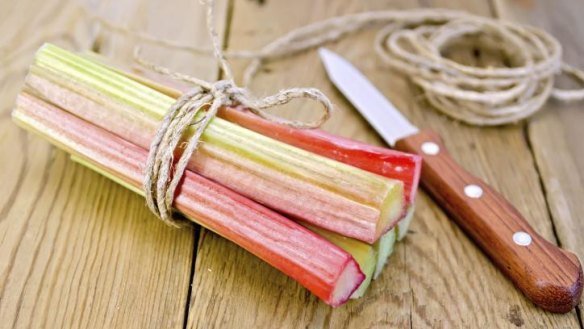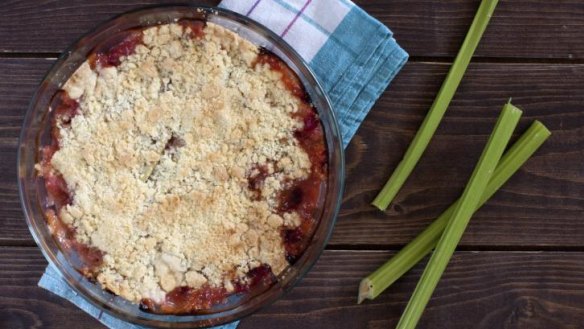How to propagate plants in a Canberra winter

Now is the time to undertake an exciting project of expanding your supply of trees and plants, by your own efforts. Some folk say that winter time is very quiet for gardeners but it is the season for pruning, for planting and for replanting.
With plants such as rhubarb and chives it is a simple process of carefully dividing and replanting. Strawberries reproduce themselves so easily by sending out runners in later summer. And some trees, including hazelnuts and figs, will produce new saplings when very low branches put down roots. The assisted process is referred to as layering, when the branch is bent down, buried and anchored in a mound of soil.
With many other hardwood, deciduous trees there is also the relatively easy way of propagation, namely by taking and planting cuttings. This is inexpensive and it will give you a sense of satisfaction and achievement when the new little trees begin to grow.

Propagation from cuttings can work well for mulberry, quinces and figs, grapevines and kiwifruit. Blackcurrant and gooseberry are also favourites. They are regarded more as ''ready rooting plants'', akin to willow, which will grow so easily when just planted into the ground. If you are a gardener who also likes flowers, then take cuttings from the dormant wood of roses and other flowering deciduous plants.
Always use a clean, sharp pair of secateurs or a knife. Wipe the blade with some methylated spirits to ensure it is sterile.
For the deciduous trees, select stems that are two year old, so that there will be some hardened up internal tissue as well as good, healthy outer wood. Select healthy sections of branches and trim to lengths of 20 to 25 centimetres and trim off just below a bud. The diameter at the base of the cutting can range between six to 20 millimetres. Ensure that there is at least two nodes that will be below ground level and one node above. You will often have at least four nodes along this length of most hardwoods.
This is also the method used for propagating olive trees but there is a variation here, as you are working with an evergreen plant. Take shorter 10 to15 cm tip cuttings from the tree, aiming to have a minimum thickness at the base of the cutting of 6 mm. Then remove all the leaves from the bottom half of the cutting.
It is a good idea to mark the top of the cutting in some way, to prevent any error of planting the wood upside down in the garden bed or pot. One way to do this is to simply shear off the top of the cutting at a slight angle.
Once you have taken the cuttings, plant them as quickly as possible. Firstly dip cuttings into a rooting hormone, which will help achieve a good striking outcome. Then plant into a prepared propagation bed. Use a dibber or a pencil to create the planting holes and gently insert the cutting. This will help you avoid rubbing off or damaging the stem in any way when you are planting it. Two thirds buried is the normal ratio
Prepare a potting mix that has a good ratio of sand (50:50). The sand will ensure that there is good drainage, so that the cuttings do not become waterlogged and die off.
The soil needs to be kept moist and warm. If you are using large pots or trays, you can plant numerous cuttings into a single container.
Keep the soil moist but not wet, and keep the pots well protected until roots develop.
Misting daily is a good practice to adopt. When the new plants have developed a good root mass, then transplant them into individual pots. New roots are very fragile so take care when transplanting.
The whole process of propagating by cuttings will take time. Our olive cuttings are taking three months to fully develop a root structure. However, there will be a real sense of achievement if you can share with friends or increase your own garden plantings by your very own efforts.
Rhubarb and apple crumble
750 gms rhubarb stems
4 large apples
½ tsp cinnamon
¾ cup raw sugar
juice of 1 lemon
Crumble topping
1½ cups plain flour
¼ cup dessicated coconut
½ cup brown sugar
100 gms butter
¼ cup chopped walnuts
Preheat the oven to 180C. Peel, core and slice the apples. Trim the rhubarb and cut into 3cm lengths. Gently cook the apples, cinnamon, sugar and lemon juice in a saucepan on moderate heat for 34 minutes. Then add in the rhubarb pieces and cook for a further 4 minutes. Pour into an ovenproof dish
In a separate bowl, combine the flour, coconut and brown sugar then rub in the butter until it resembles breadcrumbs. Stir in the walnut pieces and spread the crumble topping evenly over the fruit mixture. Bake for 20- 25 minutes until the top is golden.
This week in the garden
- Plant out a row of sugar snap peas and broad beans for an early start to the spring.Keep planting seedlings of onion, kale and spinach.
- Check your oregano, chives and tarragon plants to see if they would benefit from dividing and replanting.
- Plant a row of raspberries, in a sunny location, such as along your back fence.
- Seek out seed potatoes – organic suppliers at the Farmers Market are a good option – and keep inside your shed until the end of September.
- Check citrus for signs of scale and apply two sprays of winter oil if there is a problem. Fertilise your citrus trees with fresh chicken manure or another nitrogen rich fertiliser around the dripline of the trees.
Owen Pidgeon runs the Loriendale Organic Orchard near Hall.
Restaurant reviews, news and the hottest openings served to your inbox.
Sign up